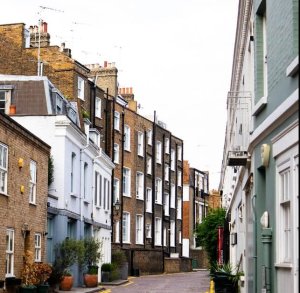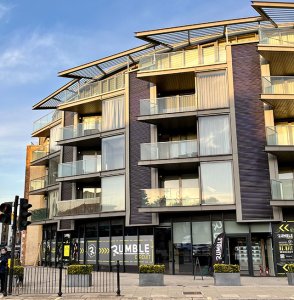The Building Safety Act 2022

Contact
Table of Contents
Introduction to the Building Safety Act 2022
This much awaited Building Safety Act 2022 was introduced into Parliament on 5th May 2021 as a consequence of the Hackitt Report on Building a Safer Future after Grenfell. It passed through Parliament on 26th April 2022 and received Royal Assent on 28th April 2022. Much of it is not expected to come into force for 6 to 12 months. This note seeks to summarise the key aspects of the legislation.
Objectives of the Building Safety Act 2022
- To protect qualifying leaseholders from the costs associated with remediating historical building safety defects holding those responsible to account.
- Overhauls existing regulations to make clear how residential building should be constructed, maintained and made safe.
- Creates three new bodies to provide effective oversight of the new regime: the Building Safety Regulator, the National Regulator for Construction Products and the New Homes Ombudsman.
Higher risk buildings
The legislation focusses on high risk buildings which are generally those over 18 metres. Residents in such buildings will have more of a say in how the building is kept safe and will be able to raise safety concerns directly with the owners and managers of their building known as accountable persons and who are responsible for repairing common parts of higher risk building.
Each building must have an accountable person who is clearly identifiable. The accountable person can be an organisation or individual who owe or has a legal obligation to repair any common parts of the building and is accountable for the fire and structural safety risks of the building. This can include a freeholder, landlord, management company, resident management company or right to manage company. If the accountable person is an organisation then someone from that organisation should be a single point of contact for the Building Safety Regulator.
If a resident feels their concerns are being ignored, they can raise them with the Building Safety Regulator.
Accountable Persons
An accountable person is responsible for assessing and managing the risks posed to people in and about the building from structural failure or the spread of fire in the parts of the building they are responsible for.
To do this the accountable person must:
- Put measures in place to prevent building safety risks happening and reduce the severity of any incident that does happen;
- Report certain fire and structural safety issues or incidents;
- Engage with residents about the building’s safety and carry out duties relating to the resident engagement strategy which is a strategy that describes how all residents over the age of 16 will be included in building safety decisions.
- Keep, update and provide information about the building for the building safety case which is a record of basic building information e.g. height, design, plans etc.
- Transfer building safety information to any incoming accountable person;
- Notify the Building Safety Regulator if there is a change to the accountable person.
Protection for leaseholders
The Act removes the idea that leaseholders should be the first port of call to pay for historical safety defects. Building owners will not legally be able to charge qualifying leaseholders for any costs in circumstances where a building (in the majority of cases meaning those over five storeys or eleven metres tall) requires cladding to be removed or remediated.
Qualifying leaseholders will also have robust protections from the costs associated with non cladding defects, including interim measures like waking watches. The Act introduces new rights including:
- The right to information about the safety of their building
- The right to challenge decisions made by the building owners
- The right to be compensated for the costs of making homes safe.
Extended Limitation Periods
It also introduces new limitation periods which extends the limitation period for certain claims. A leaseholder now has 15 years from the date of accrual of action to take action for works on dwelling (i.e. not their construction) or breaches of building regulations relating to any building.
In respect of construction of dwellings:
- If you are entitled to bring a claim before 28th June 2022 then it is 30 years from the date of accrual of the right of action
- If not entitled to bring a claim before 28th June 2022 then it is 15 years from the date of accrual of the right of action.
Challenges Ahead
The legislation is very complex and is not all in force yet. Much of whether this legislation has teeth will depend on the success of the new bodies that are created and whether they are sufficiently manned to deal with the issues that they are supposed to deal with and take the necessary enforcement action where necessary.
How we can help
If you have any concerns regarding building safety or the implications of the Building Safety Act 2022, speak to one of our experienced property dispute solicitors today. Fill out our online enquiry form or call us on 020 7485 8811 for expert advice.
Share this article
Contact us about the Building Safety Act
Call us 020 7485 8811
Email us Send us an email and we’ll get back to you
“I very much appreciate all the help you have offered me throughout this process. I have always found you to respond promptly and professionally to all my enquiries and you have worked very diligently to resolve the divorce settlement for me."
"Joanne Wescott is a very approachable and sensible opponent."
Maria Elliot is excellent to deal with and gives valuable advice.
Your service was professional as one would expect and clear along the way
Thank you for the hard work and patience and for being so patient with my constant questions.
Related InsightsVIEW ALL
- 5.2.2023
Japanese Knotweed: Knot in my backyard again!
Huge legal bill after selling home with Japanese knotweed Many will have read the recent case in which a furniture...
Read more - 9.6.2022
TOLATA Claims
What is a TOLATA claim? A TOLATA claim is a legal process under the Trusts of Land and Appointment of...
Read more - 8.6.2022
Right to Light Explained
What is the Right to Light? The right to light is a type of ‘easement’ – a legal right giving property...
Read more - 8.6.2022
The Dangers of Rent-to-Rent
What is Rent-to-Rent? Rent-to-Rent refers to the practice of landlords letting a whole property to a tenant (usually a limited...
Read more - 9.11.2021
Can I Still Claim Adverse Possession?
What is Adverse Possession aka Squatters’ Rights? The principle of “adverse possession” commonly known as “squatters rights” is a principle...
Read more - 5.10.2021
Buying a Property with a Party Wall Agreement
Introduction to buying a house with a party wall agreement Buying a property can already be a stressful process but...
Read more - 26.6.2021
The Risks Of Buying Properties Off Plan!
Buying Property Off Plan The Daily Mail reported that 300 families a week have to move into shoddy newly built homes....
Read more - 11.10.2019
End to No Fault Evictions
Everything you need to know about section 21 reform The government is planning to overhaul renter’s rights in the UK,...
Read more - 18.7.2019
New Builds, Poor Standards!
Allegations of Poor Standards and Customer Care in New Builds This week’s Dispatches programme examined allegations of shoddy standards,...
Read more - 10.4.2019
Tenant Fees Act 2019
Tenant Fees Act 2019 comes into effect On 12 February 2019, the Tenant Fees Bill received Royal Assent and comes into effect on...
Read more - 23.9.2018
HMO Licenses to be Extended
Changes to HMO Licenses In an attempt to raise standards for all relevant Houses in Multiple Occupation (HMOs), changes are...
Read more











